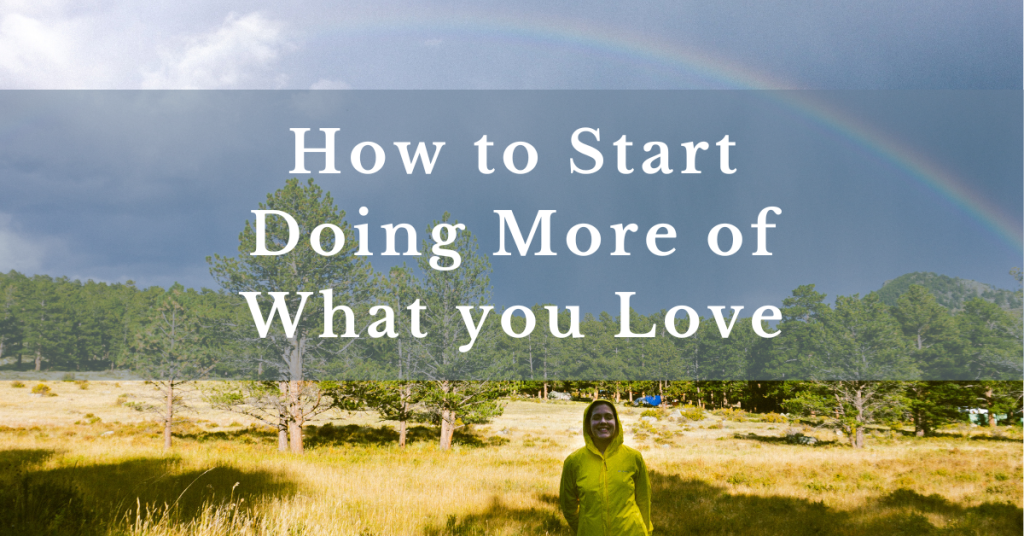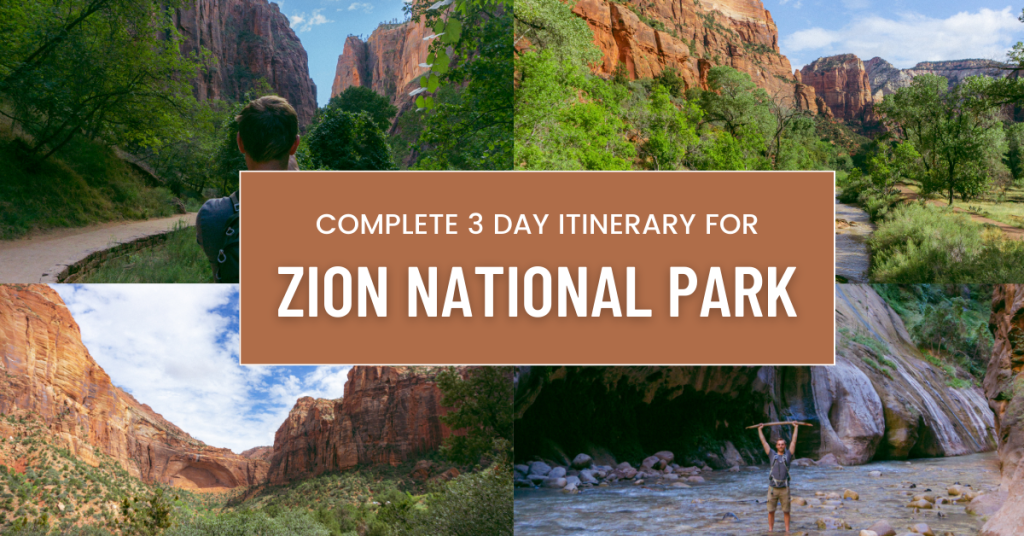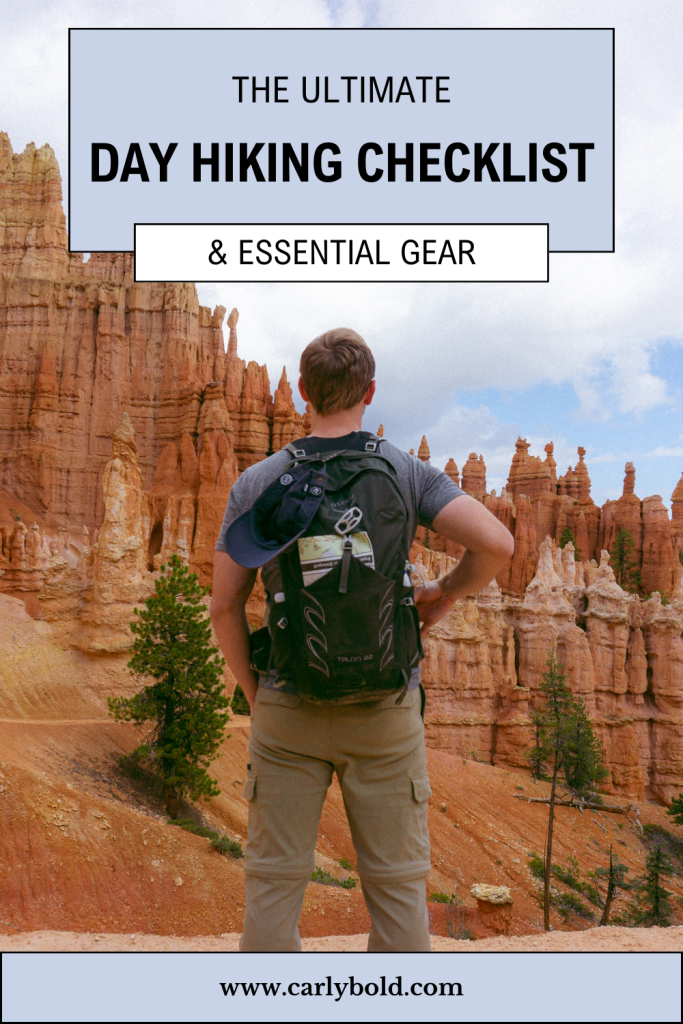
When I first started hiking, I would head out completely unprepared for what conditions I might encounter.
I wore shoes with barely any tread, trusted that the sun would remain so I didn’t bother with a jacket and would bring only enough water for the few hours I planned to be out.
Quickly I realized that the way I was packing for a day hike was putting not only myself, but other hikers and potential search and rescue team members at risk
I now sometimes feel silly with my long gear-list and full pack even just for a day hike. However, it’s important to remember you can never be overprepared. Mother nature can be incredibly unpredictable and how silly would I feel if I had to call search and rescue just because I didn’t have the right gear?
This Ultimate Day Hiking Checklist & Essential Gear list with make sure you’re prepared and ready for a day on the trails.
Click on any of the links below to jump to a specific section.
To Do Before you Hike
Before you even head out on the trail, it’s important to do the following things:
- Check the Trail Conditions
- Ensure that there haven’t been any weather warnings or other factors that could lead to trail closure or dangerous conditions.
- Check Current Weather
- Make sure you have checked the weather conditions. This will not only impact what you need to bring, but it may also determine whether you should go out at all.
- Give Someone Your Itinerary
- I always text my mom with the trail name, a link or image of the route we’ll be taking and an estimated time we expect to be done and back in service.
- Once I’m done the trail, and back in service, I text her again to confirm I’m done and safe.
Now that we’ve done all that, we’re ready to pack up!
The 10 Essentials
Let’s begin with the basics.
No matter how long of a hike you are going on or how rugged or easy the trail is, you should always be carrying these 10 Essential Items with you. These are your go-to survival items that will literally save your life in a pinch.
- Navigation : A map, compass, GPS device.
- Illumination: Headlamp or flashlight (and extra batteries).
- First Aid: should include medication, basic items to treat wounds and injuries and ointments. A full list of what your First Aid Kit should entail is outlined below.
- Gear Repair Kit: A knife or multitool, rope and repair tape.
- Fire: Lighter, matches and fire starter.
- Shelter: An emergency blanket or tarp.
- Nutrition: Extra food (on top of what you plan to eat while hiking). Should be at least 1 days worth extra.
- Hydration: Extra water, plus water storage (bottle or camelback) and water purification system and/or tablets.
- Sun Protection: Sunglasses, hat, sunscreen, lip balm, sun protective clothes.
- Extra Clothing: Enough layers to survive worst-case weather conditions
Along with these Ten Essential Items, I’ve provided a breakdown below of what kind of clothing you should bring / wear as well as food and water suggestions to keep you fed and fueled. Additionally, I’ve included a breakdown of what you should include in your First Aid Kit and some suggested items for Protective / Survival Gear.
While this is a fairly comprehensive list, it’s better to be safe than sorry. Utilize these suggestions, review your weather and trail conditions and pack accordingly. You’ll never be upset you packed too much, but you will regret NOT packing it in an emergency.
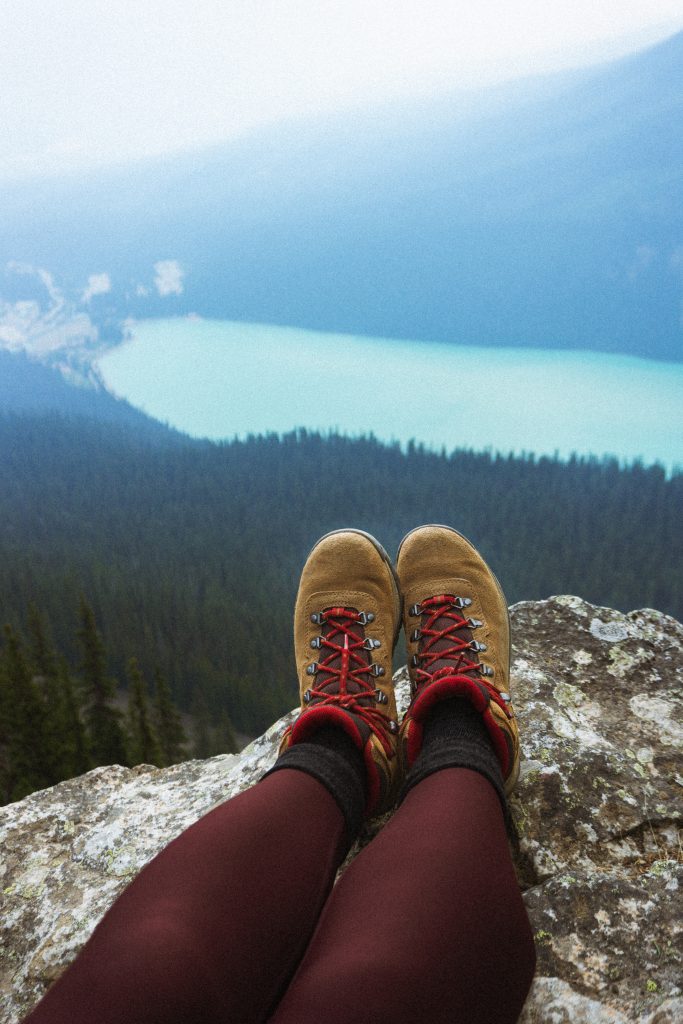
Clothing
What you wear to hike in is definitely a bit of personal preference and a bit about dressing appropriately for the weather. However, to keep you dry and warm, you should be choosing items made of breathable and quick-drying materials. In other words, stay away from anything that is 100% cotton.
- Jackets
- Light Fleece: A jacket I bring on every single hiking trip (even when it’s sunny).
- Packable Puffer: Great for the cooler months. Mine has a hood as well which has come in handy!
- Rain Jacket: I have an extremely lightweight packable rain jacket that comes on almost every single one of my hikes.
- Shirt
- UPF Long Sleeve: I recently bought a 50+ UPF long sleeve shirt for a trip to Utah. This top has quickly become my new favourite shirt. It’s light, breathable and provides added protection from the sun.
- Pants
- Zip Off: I just bought my first pair of convertible, zip off pants. I’ve fully been converted and will hike in nothing else. Super convenient on days when the temperature varies and the fact that they’re water resistant is a bonus.
- Socks
- Breathable and Comfortable: As silly as it sounds, the socks you choose to wear can really make or break your hiking experience. Though it’s definitely personal preference, opt for a sock that is comfortable, breathable and will prevent blisters. Also, ALWAYS bring an extra pair.
- Footwear
- Waterproof: Whether you opt for a full hiking boot, or go for more of a shoe or runner style is fully up to you and your preference. Regardless of the shape of your shoe, you should be choosing something waterproof with a good tread. These boots are my personal go-to and have been with me for 4 years.
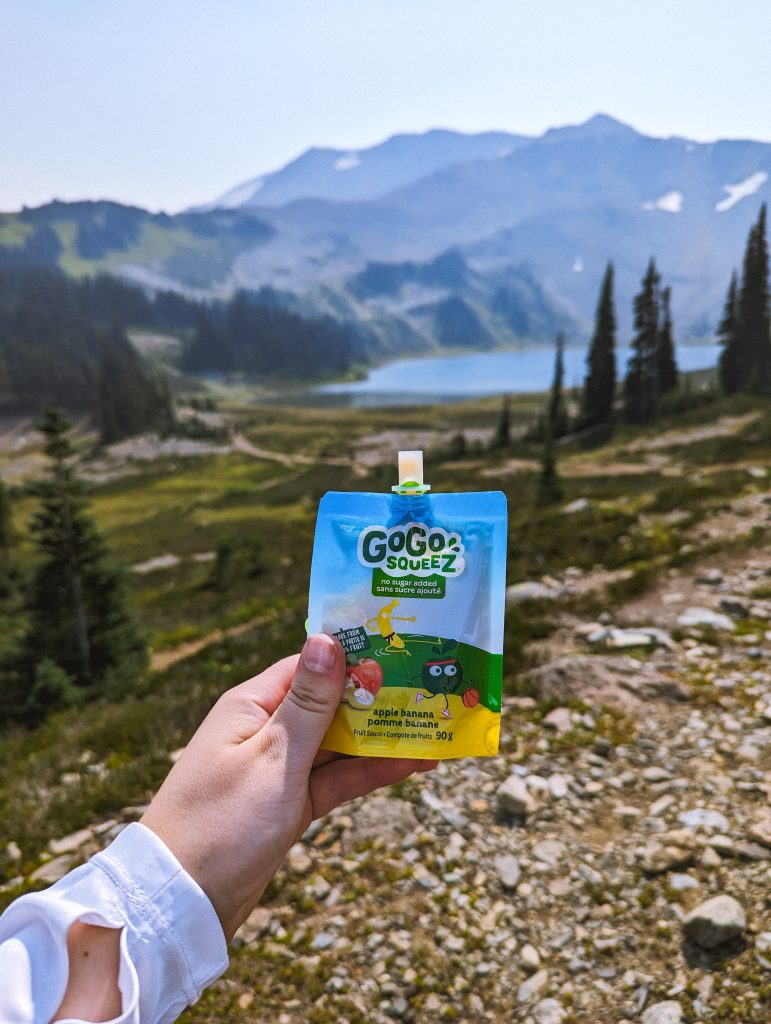
Food & Water
What you choose to pack for snacks and nutrition is entirely up to you. It’s best to pack nutrient-dense and lightweight items that will keep you fueled throughout the day.
- Water Purification: I personally use the Sawyer Pump for filtering water and I do bring this even on day hikes. Even if you pack a filtering system, I recommend also bringing purification tablets as backup.
- Water Storage: I always bring a full water bottle, along with 2 additional water pouches. One pouch I use for collecting un-filtered water, which I filter into the second pouch, using my purification system. With the two pouches + drinking bottle I can easily carry up to 97 oz. of water at once.
- Snacks: My go-to hiking snacks are; apple sauce packs, fruit bites, Ritz Crackers, tortilla wraps with PB & Jelly, nut mix and granola bars.
- Lunch: Sandwiches taste 10x better with a view, so it really doesn’t matter what you pack for lunch. It’s guaranteed to taste good.
- Food Storage: I pack all my food / smelly items in a waterproof dry pack. Not only does this keep everything organized and dry, but it keeps bears from sniffing out my lunch.
First Aid Kit
It is imperative that you bring a First Aid Kit along on your hike. Though you never hope to have to use it, in an emergency (or even just for the odd blister) you will be glad you had it along. This blog shares a very detailed list of what they determine to be critical / suggested to pack in your kit if you want to DIY it. You can also pre-purchase a kit. Here is what I have in mine:
- Bandages
- Blister Packs
- Roll Gauze
- Disposable Gloves
- Antibiotic Ointment
- Scissors
- Tweezers
- Skin Closures / Steri-strips
- Benadryl
- Ibuprofen
- Aspirin
- Imodium
- Water Purification Tablets
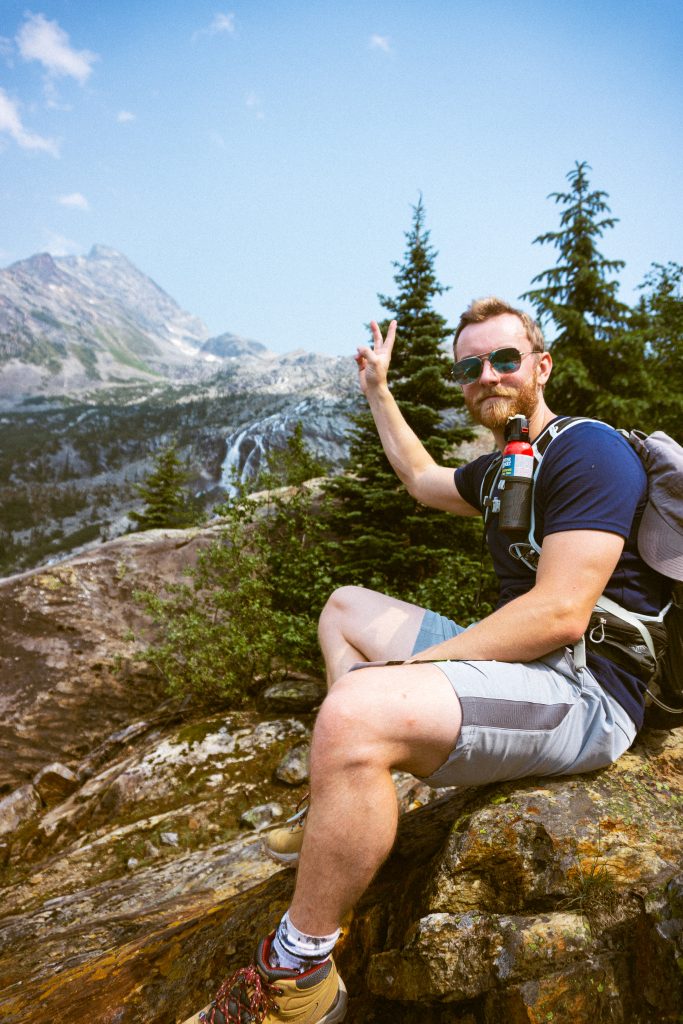
Protective Gear
Aside from the 10 Essentials you should always be brining, these are some suggested add-ons that can save your life in a pinch.
- Whistle: An emergency whistle is a must-have in case you get lost or become injured. It’s a great way to alert people of where you are. My day-pack comes with a whistle on the strap, so you might already have one on hand!
- Air Horn: We came across a bear once on the trail and no matter how much we yelled and clapped it just wasn’t phased by us. It wasn’t aggressive, but it was not scared of us. A couple came along with an air horn and that got the bear right up and moving! We now bring one on every hike. It can serve as a good distress beacon as well as a way to ward off bears.
- Bear Spray: I live and hike in a very bear-dense region and have often gone hiking in Grizzly territory. For peace of mind, we pack along a bear spray on any hike where we might encounter bears. Ensure you know how to properly use it before purchasing.
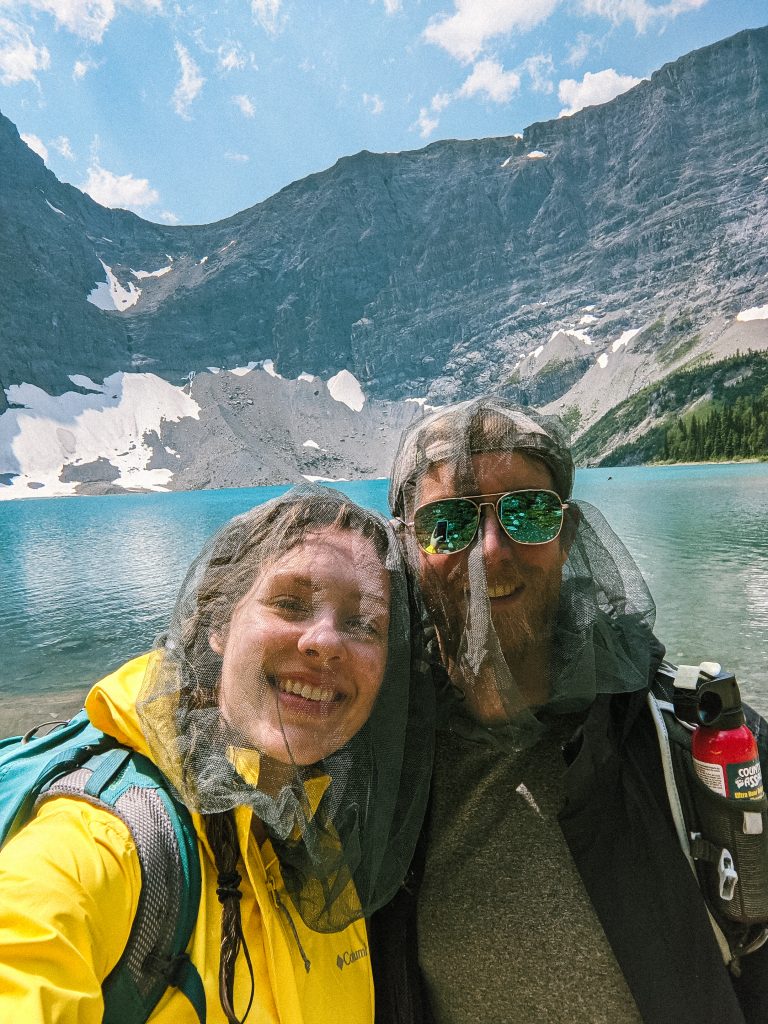
Non-Essential, but Necessary Items
I’ve gone on enough hikes to know what I need to bring and what I REALLY NEED to bring. The following items are 100% non-essential, but have made my trips all the more enjoyable and memorable.
- Bug Net Hat: After having a few too many views ruined by swarming bugs, my husband and I invested in these bug hats. They are cheap and lightweight, not to mention extremely fashionable.
- Toilet Paper: Pretty self explanatory. Leaves are great in a pinch, but I bet you’d rather use 3ply.
- Camera: I love to take pictures and sometimes the camera on your phone just won’t do it justice!
- Swimsuit: On a hot summer hike, NOTHING feels better than getting to cool off in an alpine lake. You can just swim in the buff, but I’m a bit more modest and opt to pack a swimsuit.
- Microfiber Hiking Towel: Can be used to try off after an alpine swim or wipe away sweat. Mine has come in handy too many times to count.
Being prepared for a day hike is more than just throwing on a pair of runners, grabbing a water bottle and hitting the trail. Though it can be tempting to pack minimally, ensuring you have all the proper items can save your life.
I want to also leave a gentle reminder that everything you pack into the backcountry, must be packed out. This includes food wrappers, used toilet paper, the works. Bring along a small Ziploc or garbage bag to pack all your waste and discard it in a garbage bin once back at the trailhead or at home.
This detailed checklist and essential gear list will get you prepared properly for your next adventure!
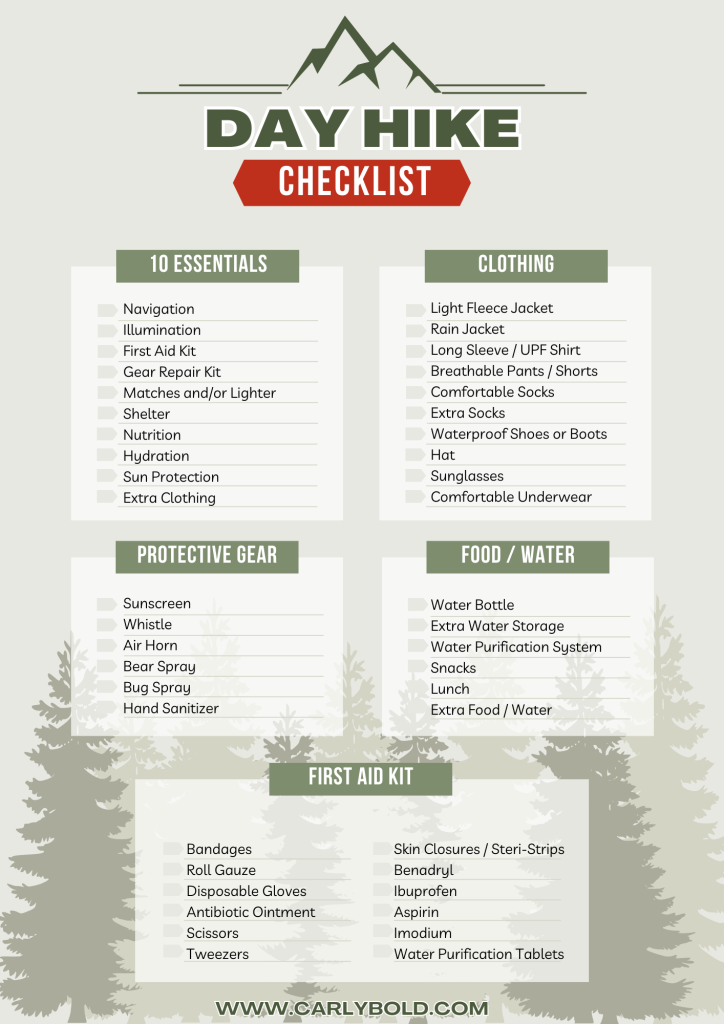
*this post contains affiliate links.
